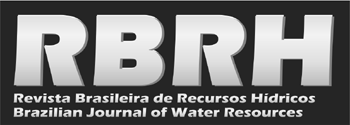RESUMO
Nesse estudo foi avaliada a eficiência da rede de monitoramento da qualidade da água da bacia hidrográfica do rio Sergipe, usando a análise multivariada de dados, através da análise de componentes principais (ACP) e análise de agrupamento hierárquico (AAH). A ACP foi aplicada a uma matriz de dados composta por 12 estações de amostragem e concentrações médias de 23 parâmetros da qualidade da água, obtidos em quatro campanhas de amostragem no período de junho/2013 a novembro/2015. Todas as 12 estações de amostragem foram consideradas como principais (peso>0,7) e, portanto, devem ser mantidas no programa de monitoramento. A ACP apontou que dos 23 parâmetros medidos, são essenciais para avaliação da qualidade da água, apenas 16 no período seco e de 17 no período chuvoso. A AAH separou as estações da rede de monitoramento em 4 grupos em função das características da qualidade da água, considerando os impactos naturais e antropogênicos. Os principais impactos foram originários de fontes naturais (constituintes minerais) e de aportes antropogênicos associados a despejos urbanos, sanitários, indústrias e escoamento superficial de áreas agrícolas.
Palavras-chave:
Rede de monitoramento; Qualidade da água; Análise de componentes principais; Análise hierárquica; Rio Sergipe

 Monitoramento da qualidade da água da bacia do Rio Sergipe: uma avaliação usando análise multivariada de dados
Monitoramento da qualidade da água da bacia do Rio Sergipe: uma avaliação usando análise multivariada de dados Thumbnail
Thumbnail
 Thumbnail
Thumbnail
 Thumbnail
Thumbnail
 Thumbnail
Thumbnail
 Thumbnail
Thumbnail





